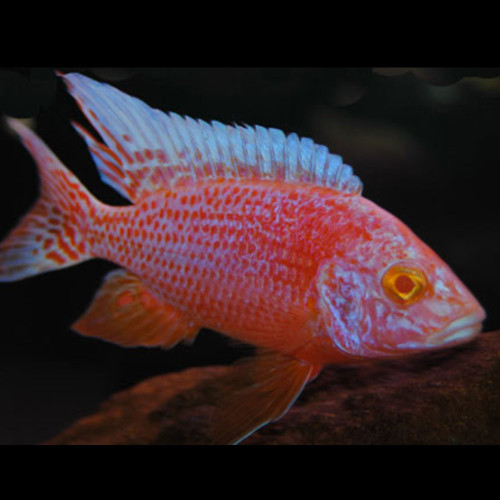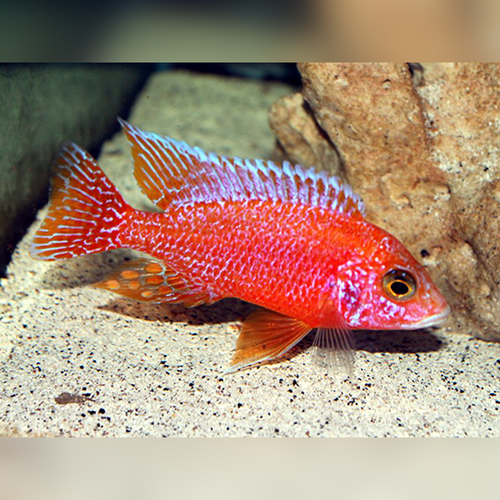Our Guide To Keeping Albino OB Peacock Cichlid
-
About Fish Species:
- Scientific name: Aulonocara sp. (Albino OB morph)
- Common name: Albino OB Peacock, Albino Orange Blotch Peacock
- Family: Cichlidae
- Origin: Selectively bred variant from Lake Malawi Aulonocara species
- Adult length: 12–15 cm
- Lifespan: 6–10 years
- Diet: Omnivore (insectivore tendencies in the wild)
- Care Level: Moderate
- Temperament: Semi-aggressive; males territorial, females generally more peaceful
-
Tank Setup:
- Provide a sandy substrate with scattered rock formations to create territories and hiding spaces.
- Minimum tank size: 200 L for a harem (1 male with several females); larger for mixed Malawi communities.
- Plants are optional; use hardy species such as Anubias or Java Fern fixed to rocks to prevent uprooting.
-
Water Parameters:
- pH: 7.8–8.6 (alkaline and stable)
- Temperature: 24–27 °C (75–81 °F)
- Hardness: 6–15 dGH with good carbonate hardness
-
Filtration and Water Flow:
- Use strong, reliable filtration with moderate water flow and good aeration.
- Perform weekly water changes to keep nitrate levels low and pH stable.
-
Diet:
- Offer a high-quality cichlid pellet or flake formulated for omnivorous African cichlids.
- Supplement with frozen or live foods such as brine shrimp, mysis shrimp, and bloodworms (feed protein-rich foods in moderation to prevent bloat).
- Include spirulina-based foods to promote vibrant colour and aid digestion.
-
Tank mates:
- Compatible with other peacocks and haps of similar size and temperament.
- Avoid highly aggressive mbuna or very small, timid fish.
- Best kept as one male per morph/species to avoid excessive aggression and hybridisation.
-
Behavior and Compatibility:
- Males display vivid albino patterning with orange blotches, while females have softer colouration.
- Territorial behaviour is most pronounced during breeding; provide ample hiding spaces to reduce stress.
- A maternal mouthbrooder: females carry fertilised eggs and fry in their mouths until they are ready to swim freely.







